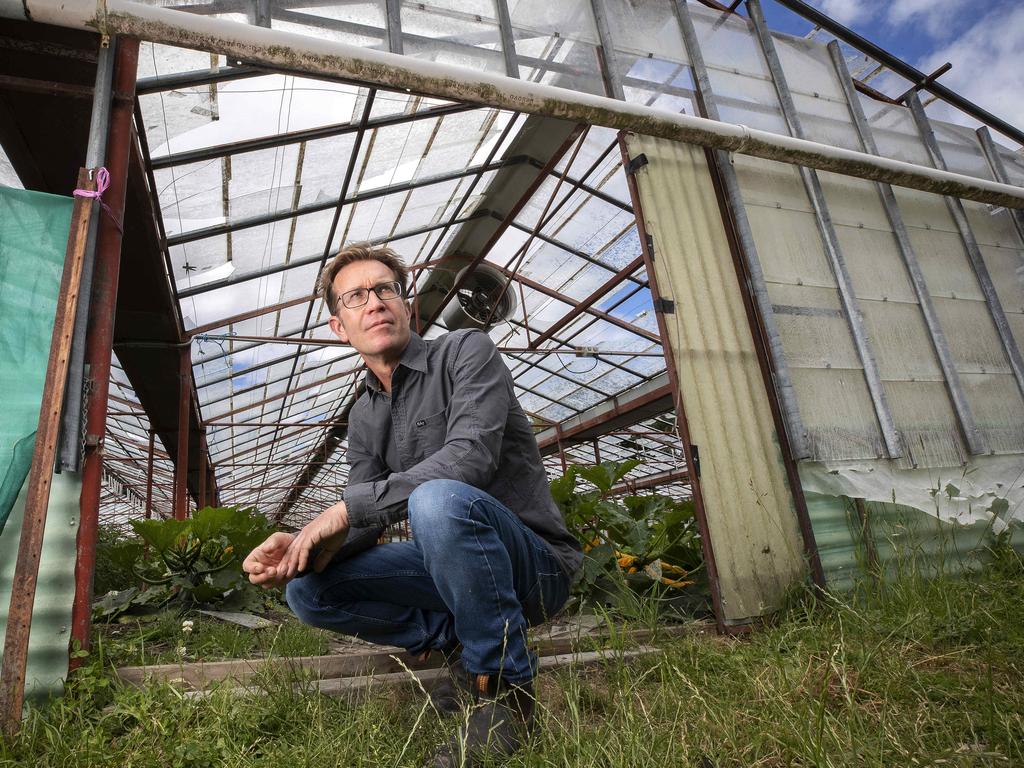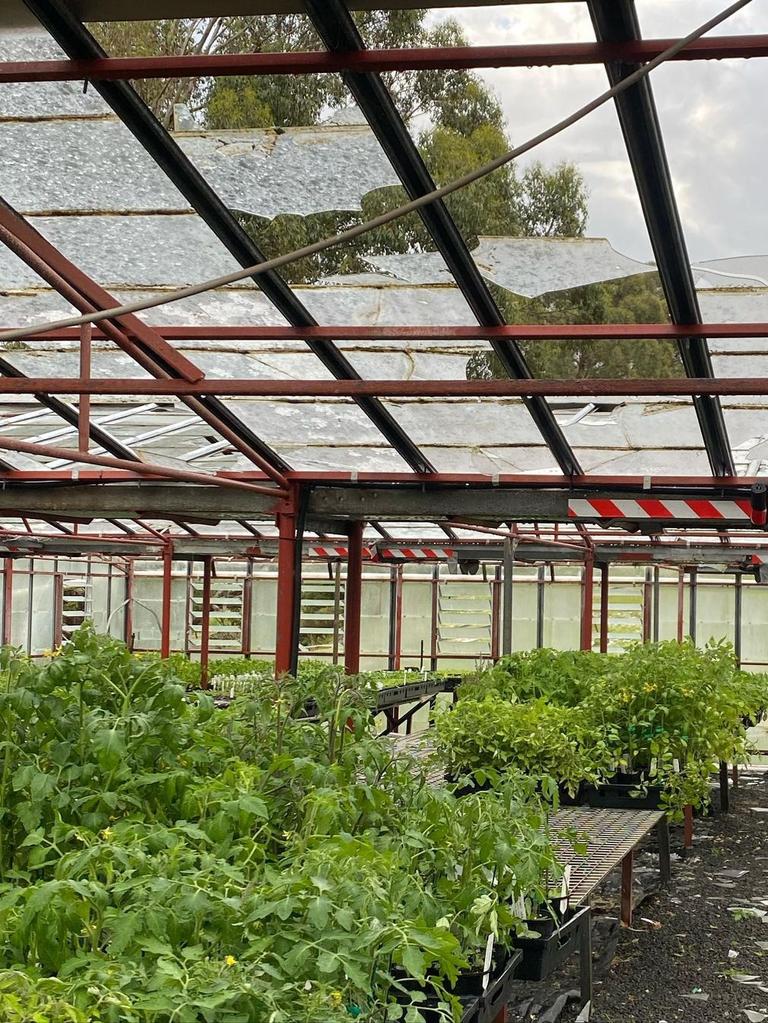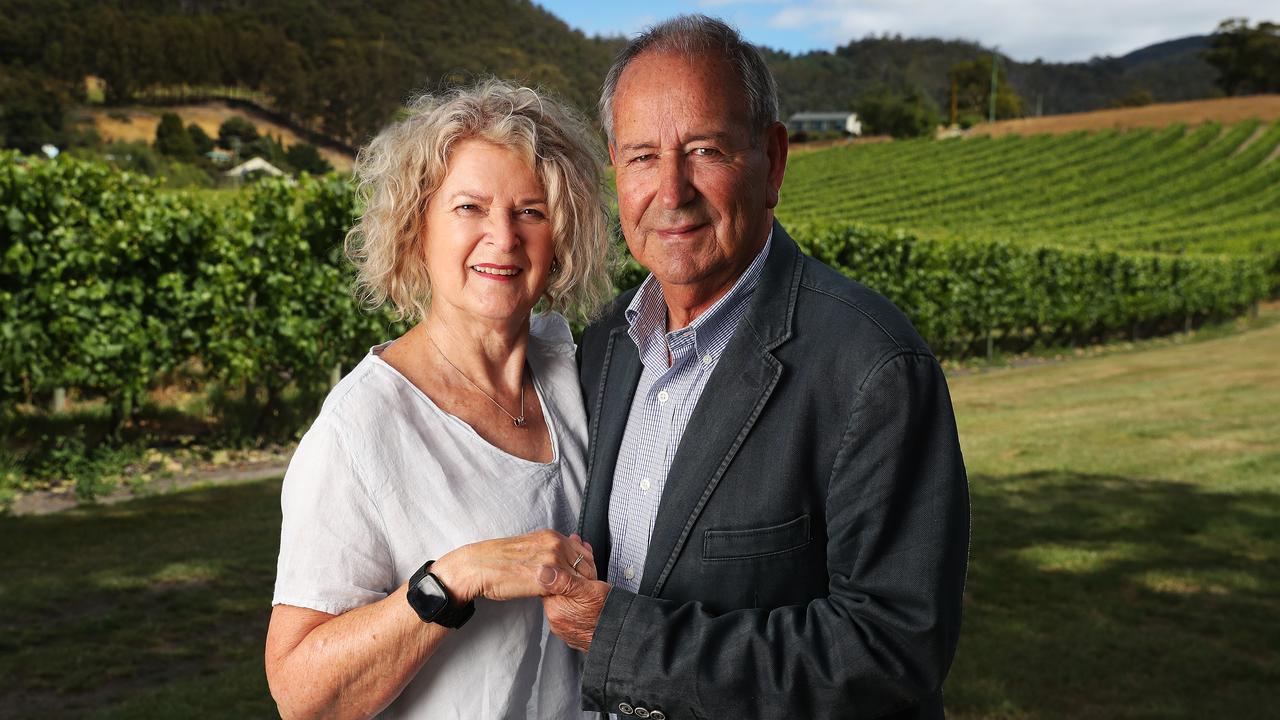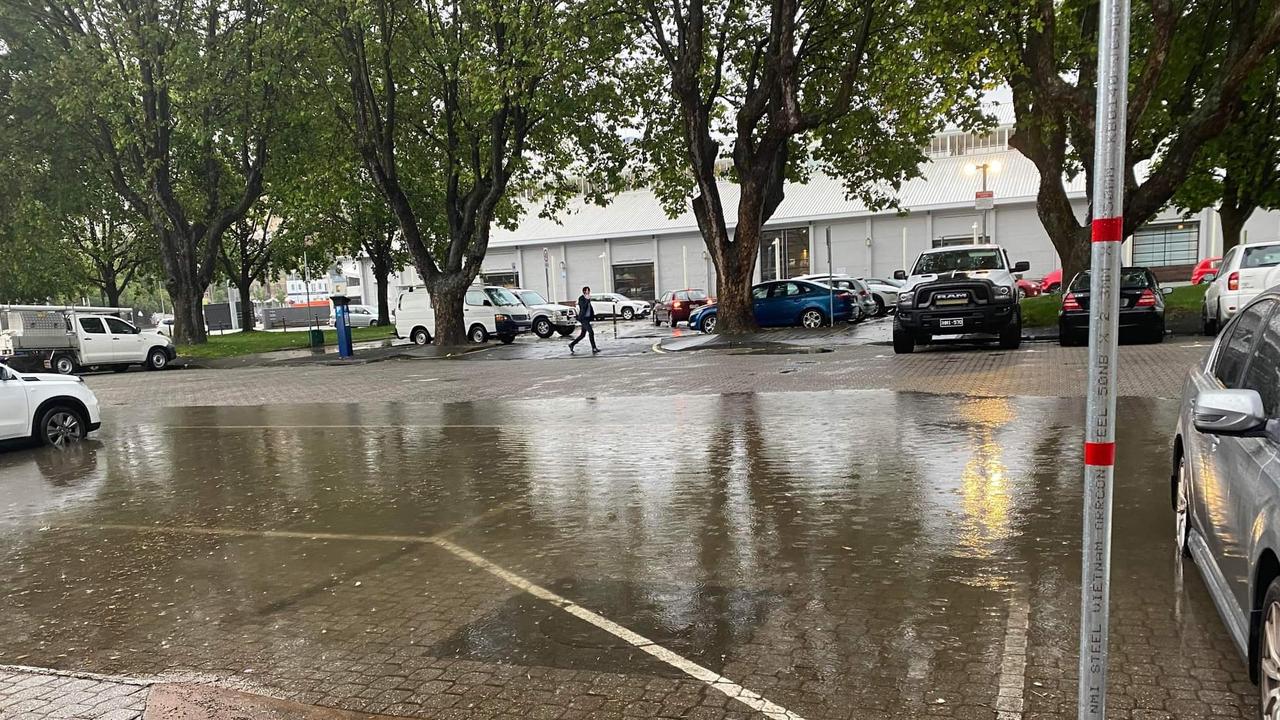Huon Valley farmers and wine producers count costs of freak hailstorm
Huon Valley producers are still counting the costs of “the worst storm in decades”, with one farmer’s harvest completely wiped out after hail shattered his glasshouses. PHOTOS, VIDEO >>

WHEN hail began to pelt Rob Mather’s car, his mind went straight to his glasshouses protecting his precious summer harvest.
Arriving at his Huonville farm, “reality set in” as he saw about half of the 1750sq m structure shattered, fragments of glass sprayed across his organic produce he sells at Hobart’s Farm Gate Markets and to local restaurants.

One week on from the freak hailstorm that smashed the Huon Valley, Mr Mather is among many producers still counting the costs of the devastation.
“It’s a devastating blow,” the Valley Fresh Farm owner told the Mercury.
“It’s put a halt to our operations. We’re assessing the damage, it’s significant and there’s no prospect of a summer harvest.”
While repairers are yet to formally assess it, Mr Mather said he was looking at “at least $500,000 in loss of income, repairs and restoration” – and possibly a lot more.


Mr Mather also had to make the tough decision to stand down four staff members, part of “an amazing team” who worked tirelessly to prepare the summer crop that was destroyed in such a short time.
“I’m heartbroken for the staff for their future being uncertain, especially at this time of year,” he said.
“I’ve got to say though, we’ve had amazing support from the local farming community and the broader Tasmanian community and all our customers. Everyone wants to pitch in and help but at the moment it’s not safe to enter the glasshouses until the professionals get in.”

The producer said last week’s hailstorm was “the worst any of my neighbours can recall” in more than 70 years and intense enough to damage the glasshouses that had been standing since the 1980s when it was a hydroponic tomato set-up.
“It’s sort of ironic that the glasshouse structure is meant to reduce the risk of climatic conditions but it also introduces other risks we’ve now found with hail damage,” Mr Mather said.
“Now, I’ll have to go back to the drawing board to think about next moves and what the future holds for us. It’s just too early to say.”
The storm was about a kilometre wide and wreaked havoc from the outskirts of Huonville, where Valley Fresh Farm is, to Ranelagh and Lucaston.
Andrew Griggs runs Lucaston Park Orchards and said it was estimated the storm destroyed 50-75 per cent of the orchard’s apples.
“I’ve never seen anything like it in the time I’ve been here growing,” he said, describing 20mm-sized hailstones.
“It’s cut the skin and badly dented a lot of them. We’re hoping we will be able to salvage something.”
In some consolation, Mr Griggs said the farm’s cherries and raspberries were mostly protected with netting and were largely unscathed.
“Some orchards a bit further to Huonville are at 100 per cent (losses),” he said.
“It was bad enough here but probably wasn’t the worst.”

Wine Tasmania CEO Sheralee Davies said they were doing all they could to support the local producers who were hit — including Home Hill Winery and Kate Hill Wines.
She echoed Mr Mather’s sentiments that agriculture could be a tough industry reliant on the weather gods, with reports the wet weather has put many producers two to three weeks behind schedule.
“It’s good in a way because they haven’t had to use irrigation, but in other aspects it’s creating headaches over access to vineyards and vehicles getting bogged and creating some logistical challenges,” Ms Davies said.
“In looking at the longer range forecast, the bureau indicates we’re going to have a warmer summer – so where we’re lagging behind due to cooler weather it looks like summer is going to be warmer and a little bit wet but hopefully that sees the vines able to move along and our fruit to develop and ripen as we get into vintage 2022.”
Winemaker left counting the cost of storm
A HUON Valley winemaker is counting the cost of a brief but vicious storm which produced marble-sized hailstones that ripped through his grapevines.
Terry Bennett, who runs Home Hill Winery at Ranelagh alongside wife Rosemary Bennett, said carnage from Thursday night’s wild storm could reduce the vineyard’s harvest by as much as 50 per cent.
“It went on for 10 or 15 minutes and the hail was as big as marbles,’’ he said.
“It stripped the leaves off and broke the shoots off. I’ve never seen anything like it. It was incredible.”

Other Huon producers, like fruit growers Hansen Orchards at Grove, reported damage from the storm could cost them more than $1m.
Mr Bennett said Home Hill was still hoping to salvage something out of the season.
“We are very lucky we are going into flowering and there are no actual grapes on the vines at the moment,’’ he said.
“If there were grapes on there, it would have just ripped them to pieces, like it did to the apples at Hansen’s.
“There are still some good bunches left ... we just hope we’ll get some warmer weather to get things moving again.”
Mr Bennett said depending on conditions during summer, picking usually occurred in mid-late April and occasionally as late as early May.
It comes as Australians were being warned to brace for more storm damage in coming months as the effects of the La Nina weather event emerge.

The Bureau of Meteorology issued a La Nina “watch” on September 14, which it then ramped up to a La Nina “alert” on October 12 – it then confirmed the phenomenon on November 23.
Much of eastern Australia has already been lashed over the past two months by heavy rain and thunderstorms.
La Nina, which is linked to the shifting pattern of sea surface temperatures through the Pacific and Indian Oceans, affects rainfall and temperature variations in Australia.
Typically it is associated with heavier rainfall for eastern, northern and central parts of the country, as well as a higher likelihood of tropical cyclones.
The weather bureau says this La Nina event is likely to persist until at least the end of January 2022.




